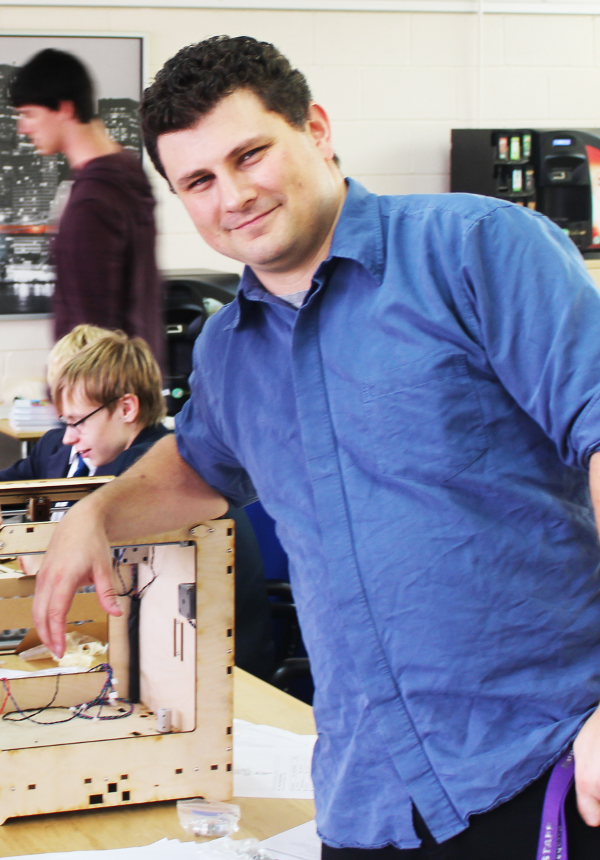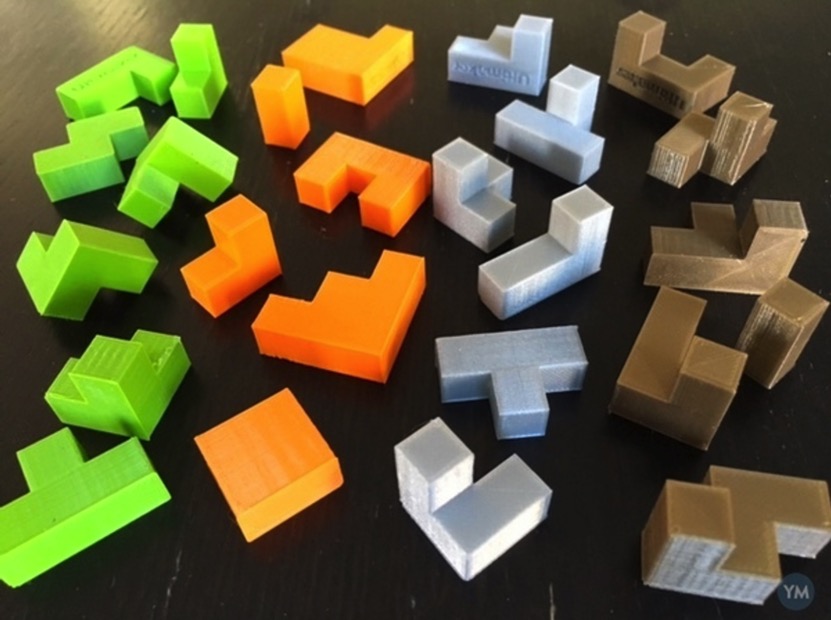
Ted Turnbull of Fareham College
YouMagine has a passion for education. To see what is exactly happening in 3D printing in education we sat down with Phil Savage and Ted Turnbull of Fareham College in Fareham, in the UK. The college has 4 Ultimaker 2’s & 6 Ultimaker Originals as well as a Replicator x2. The College is committed to getting students of all ages to use the printers. They want to increase the quality and learning of their technology lessons. Most schools that are looking into 3D printing are only getting one machine, for one class. Fareham’s 3D printing implementation is much more extensive. Actually it is one of the most extensive ones I’ve seen so far. I took the time to catch up with them at the TCT Show in order to see if they had any lessons that other schools looking at 3D printing could learn from.

Fareham College students assembling Ultimaker Originals
What does your 3D printing implementation look like?
“The plan with the 3D printing hub is initially geared towards enabling and enthusing teachers learn how to use 3D printers in their education practice.
Student course work and teaching materials are financed by the college, with personal and private work for staff and students produced at cost. Education Budgets in the UK have become increasingly stretched in recent years, so acquiring teaching materials aimed at kinaesthetic learning is financially challenging. The VAK (Visual, Audio, kinaesthetic) model suggests that some students learn by being told things, some learn by being shown something but others learn by experiential physical (kinaesthetic) learning. For this last group of students with the budgets the way they are it is hard to find the teaching tools to enable this. However, 3D printers coupled with a growing range of resources, such as YouMagine, give us the tools we need in to enable this learning experience.”

Kids making 3D printers!
Who operates the machines?
“Its a combination of options. Many students and teachers have received enrichment training or continuous professional development training covering using the 3D printers. In terms maintenance and optimization we have people trained to do that as well. The 3D printers are racked in the back of our largest classroom and someone is always present. When we move to a new facility in the next academic year the printers will be in HVAC controlled space.”

A student placing an axis rod on an Ultimaker one.
What have been the major issues you’ve encountered?
“The biggest issue for us has been funding – Ultimaker’s Create program has been an enabler in this regard. We also had to take into account a range of health and safety issues. In the UK we have to comply with legislation known as COSHH, and we’ve had to perform a detailed health and safety assessment process which took quite a long time. One particular area being issues around the properties of materials such as PLA and Nylon, which were hard to certify because of the comparative ‘newness’ of their use in education for 3d printing.”
What are some of the biggest advantages?
“We’ve an ongoing project with our Child Care and Early Years program for people who want to work in nurseries and in the wider child care sector. We are enabling them, in-house, to design and manufacture bespoke board games, toys and other learning resources, with a professional finish, to use with the context of child care provision. This can be achieved at a fraction of the cost and time, by utilizing 3d printing technology, when compared to almost any ‘traditional’ manufacturing process available in education.
Our sports science department is providing its students with 3D Printed knee joints to help them better visualise, understand and learn about skeletal mechanics. For chemistry, students can be provided with molecular modelling kits, at a tiny proportion of the cost of similar commercial alternatives. In total we have 16 ongoing projects at the college at the moment. Amongst other goals for the year we hope to gather a lot of usage data and evaluate how people use the facility. This information can then inform an iterative development process for our use of the technology just as the wider 3D printing industry does.”





